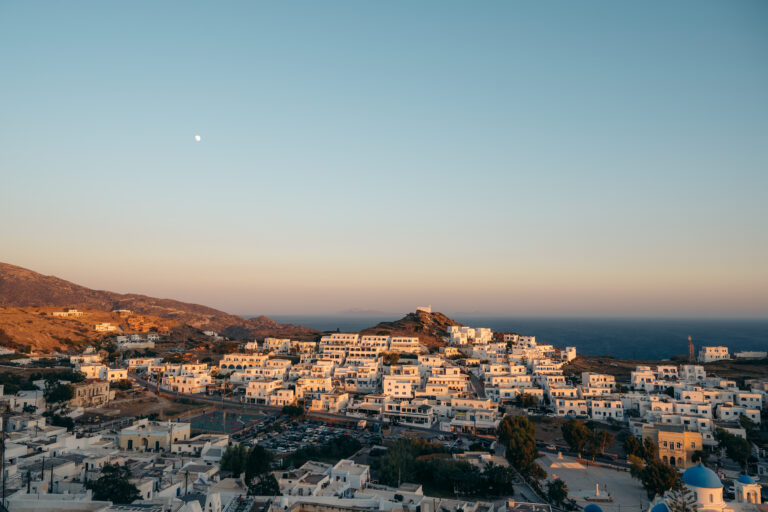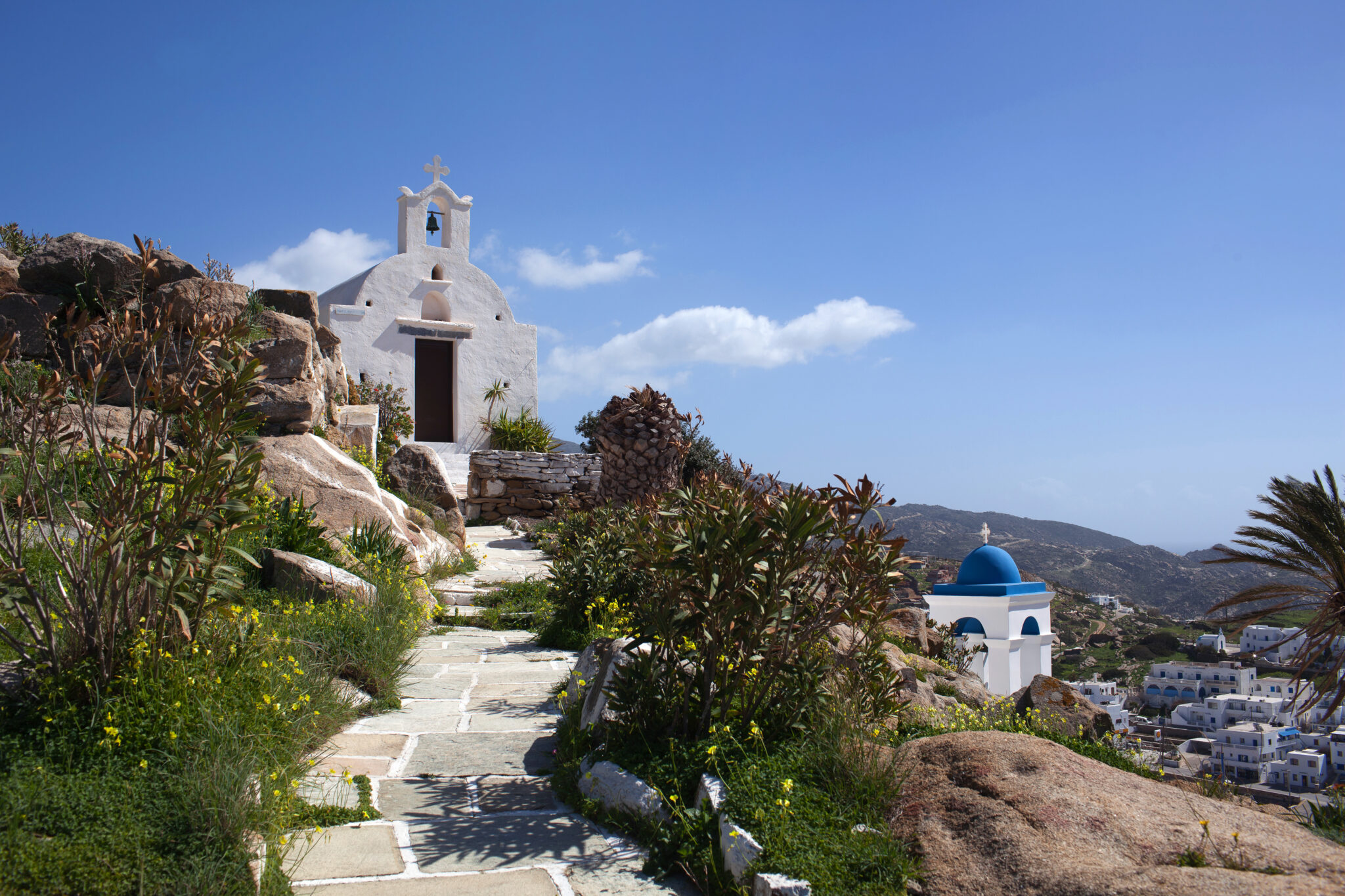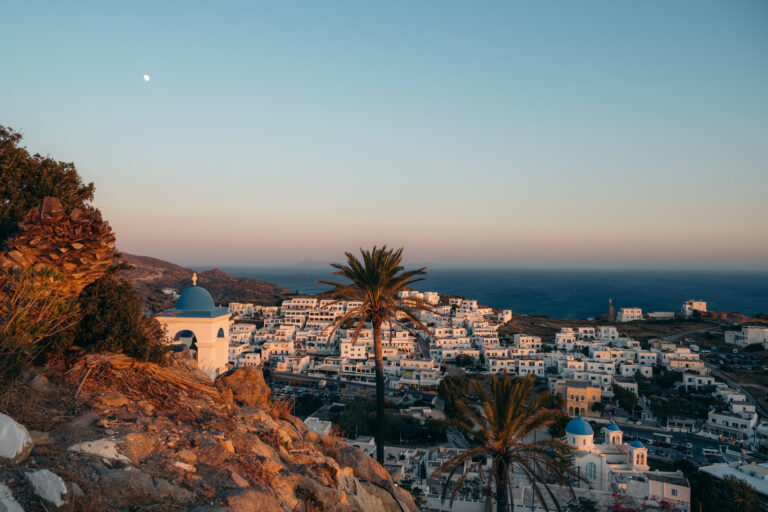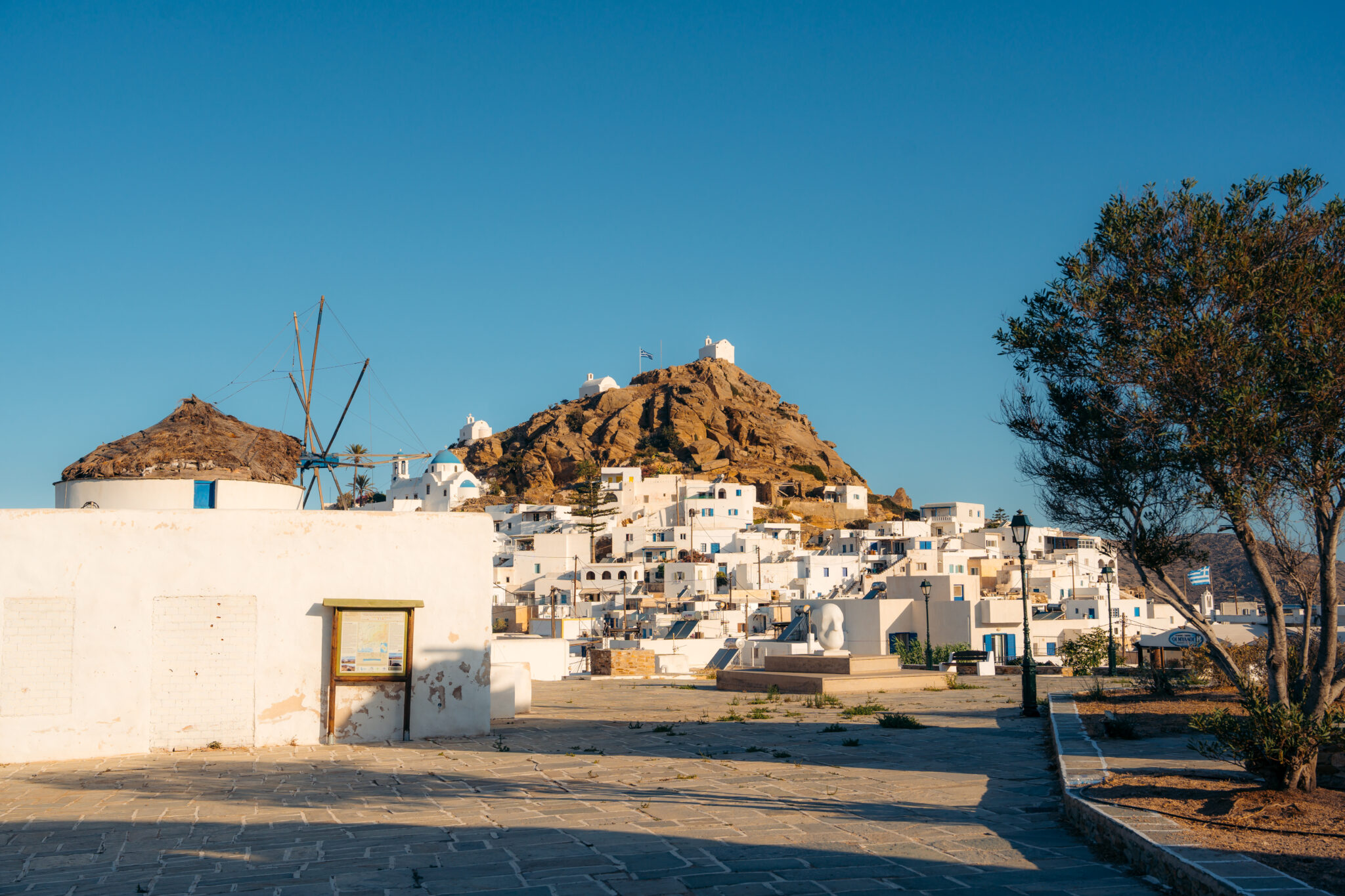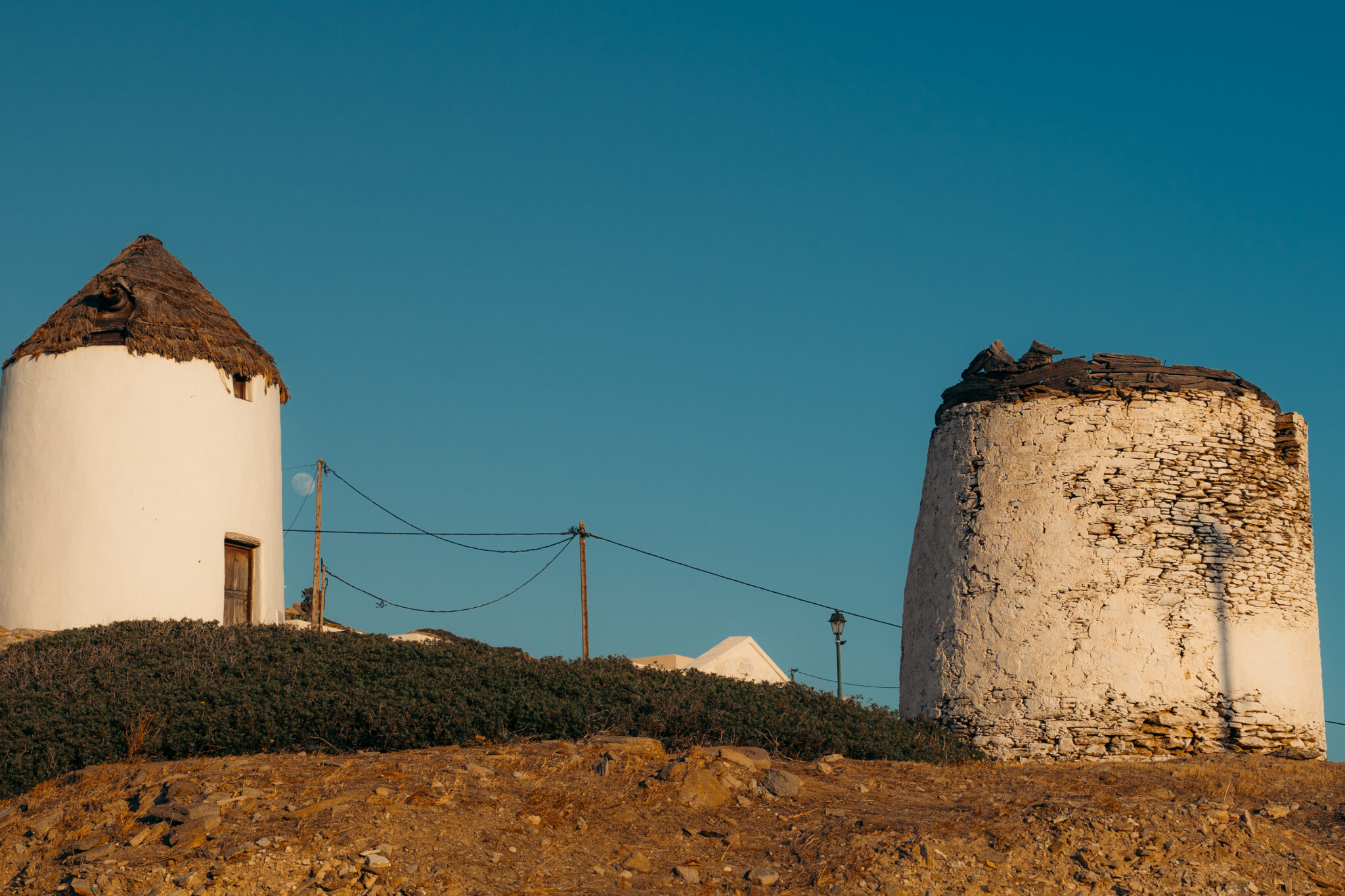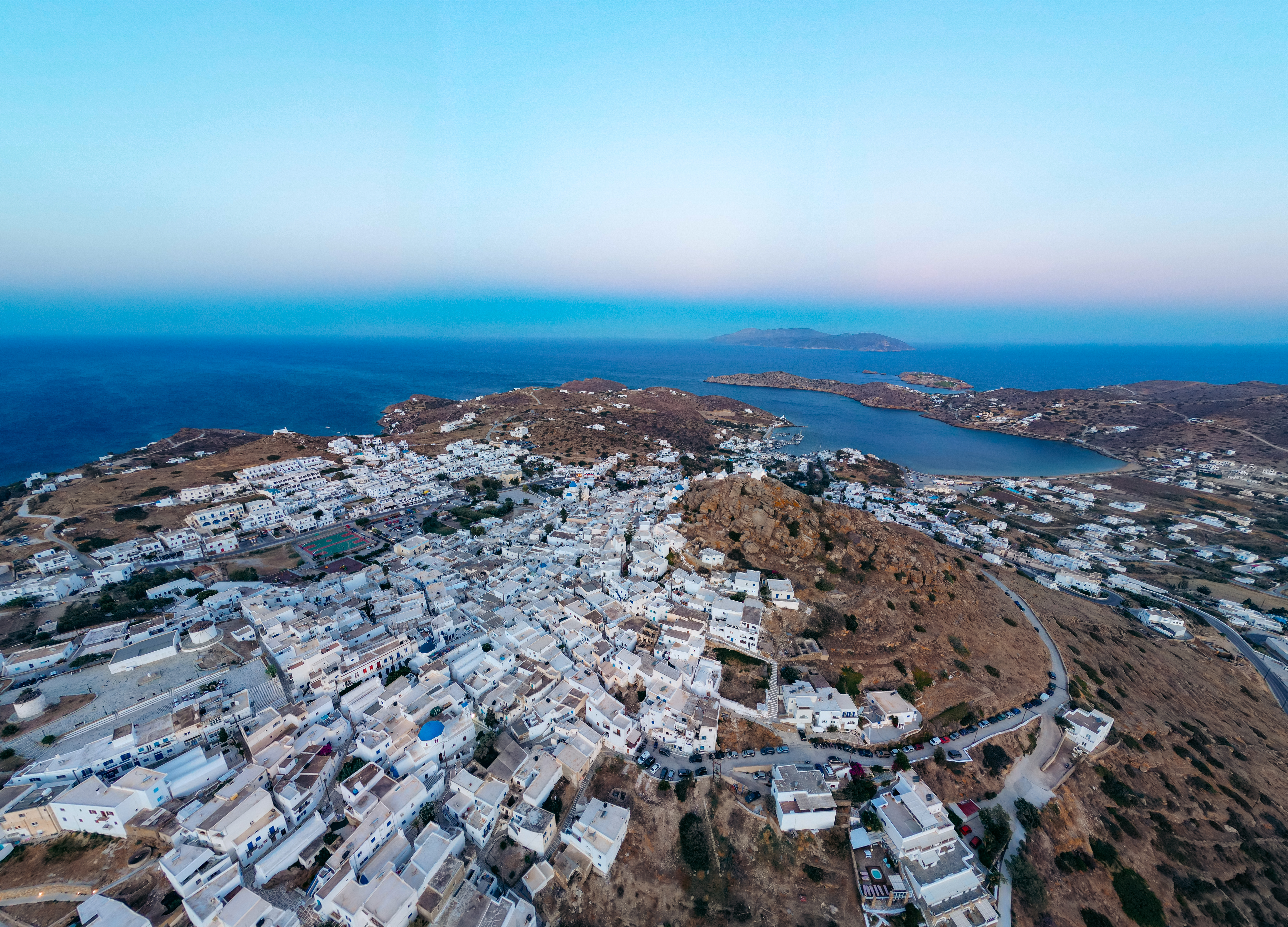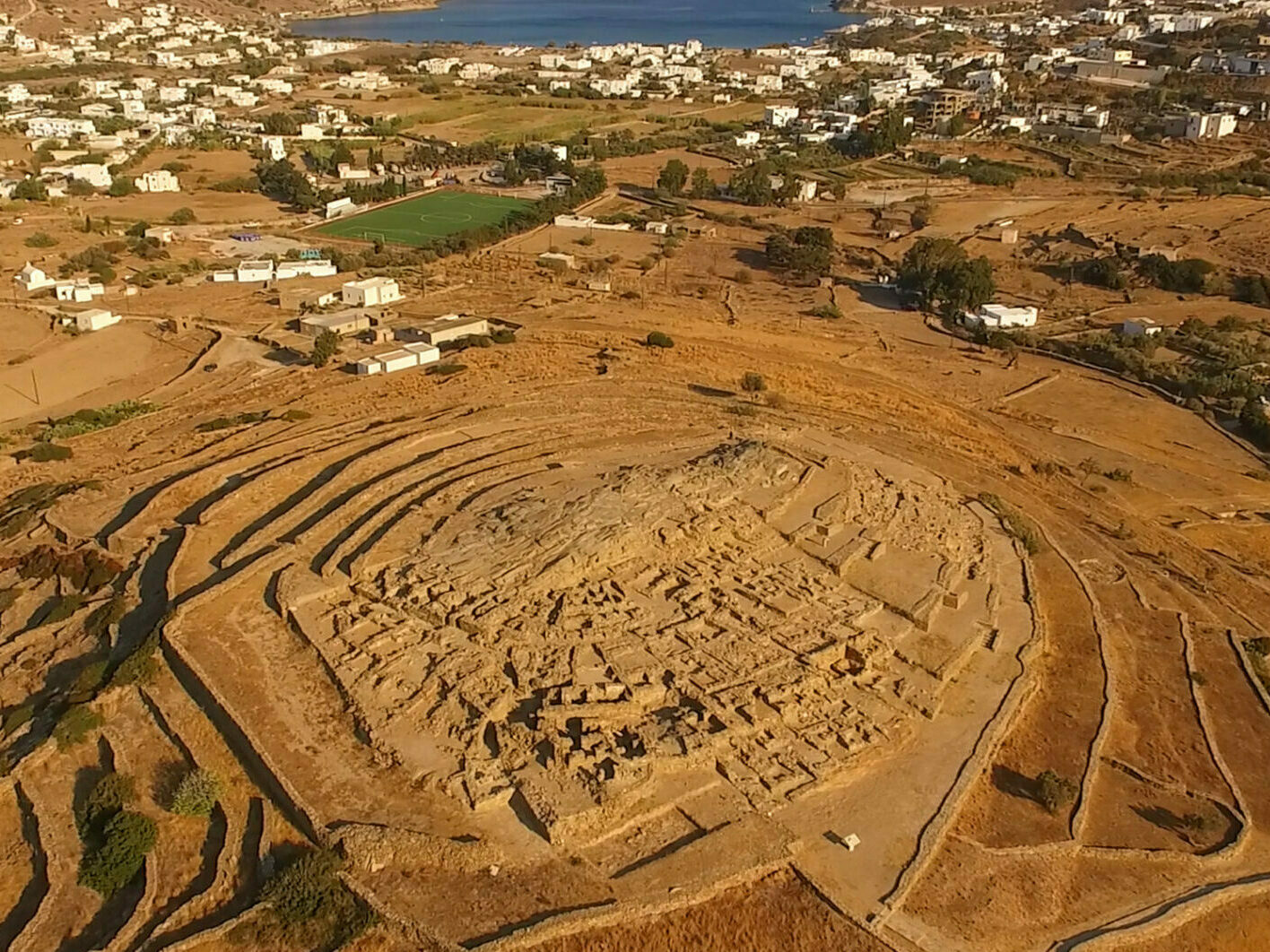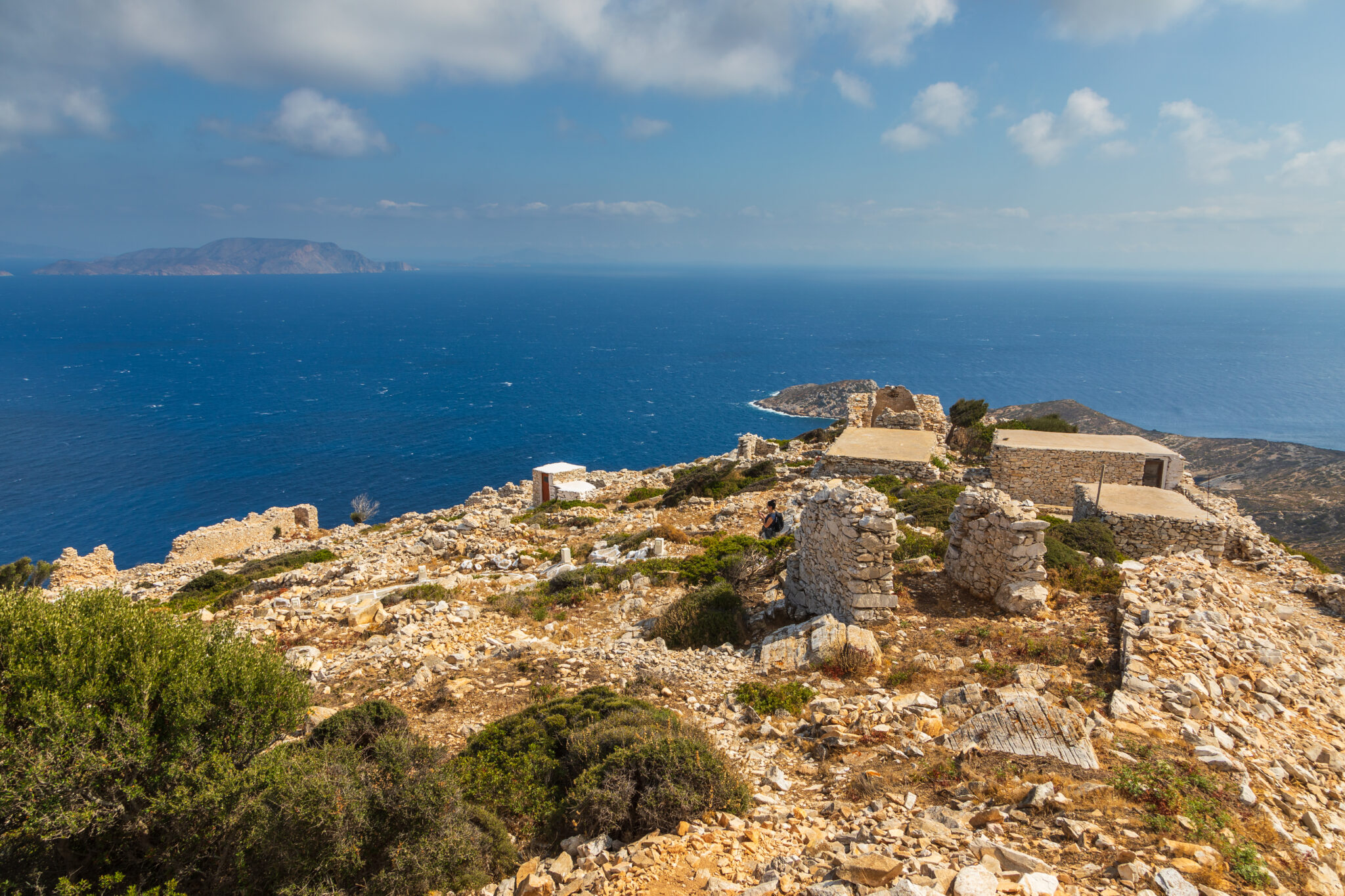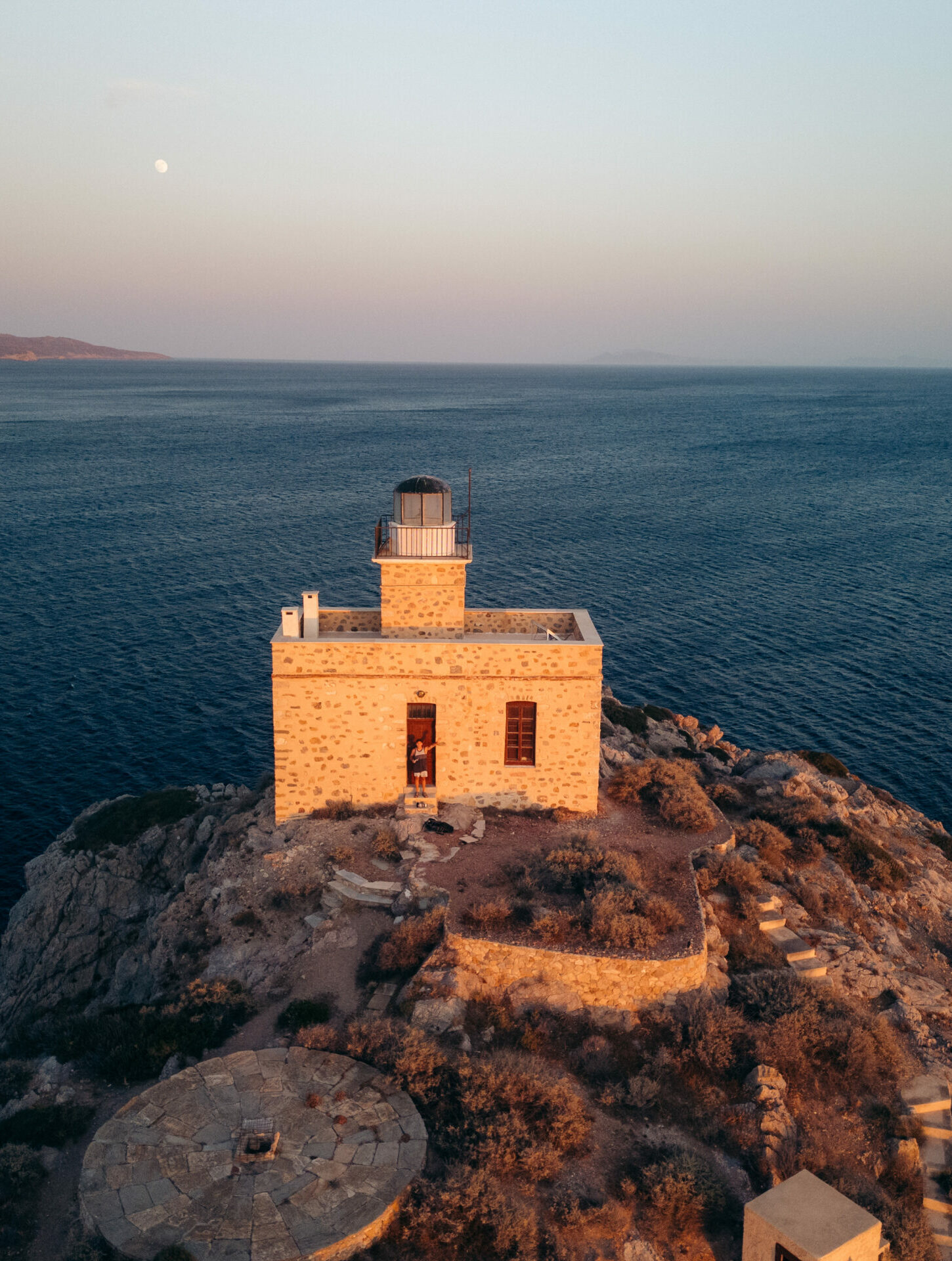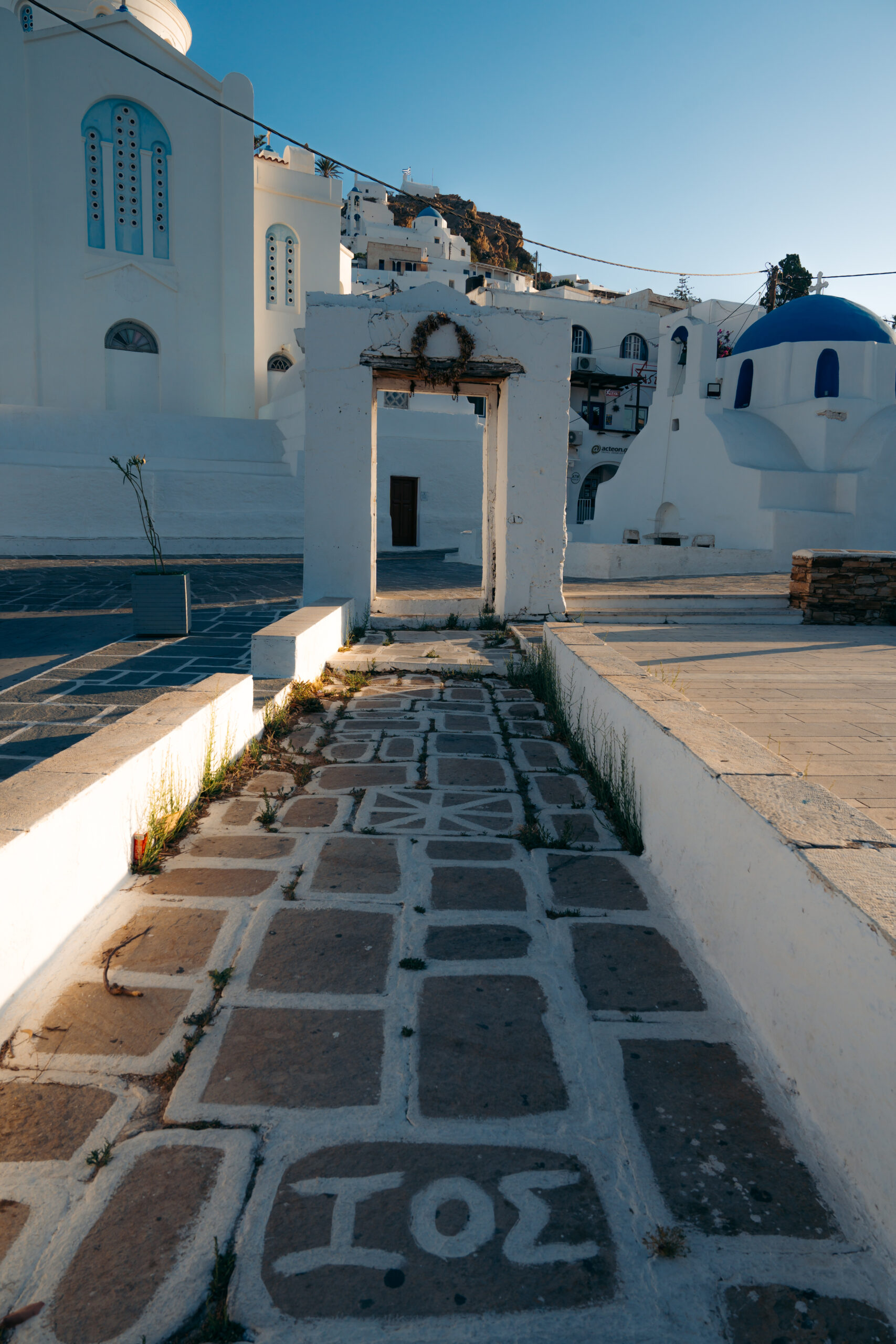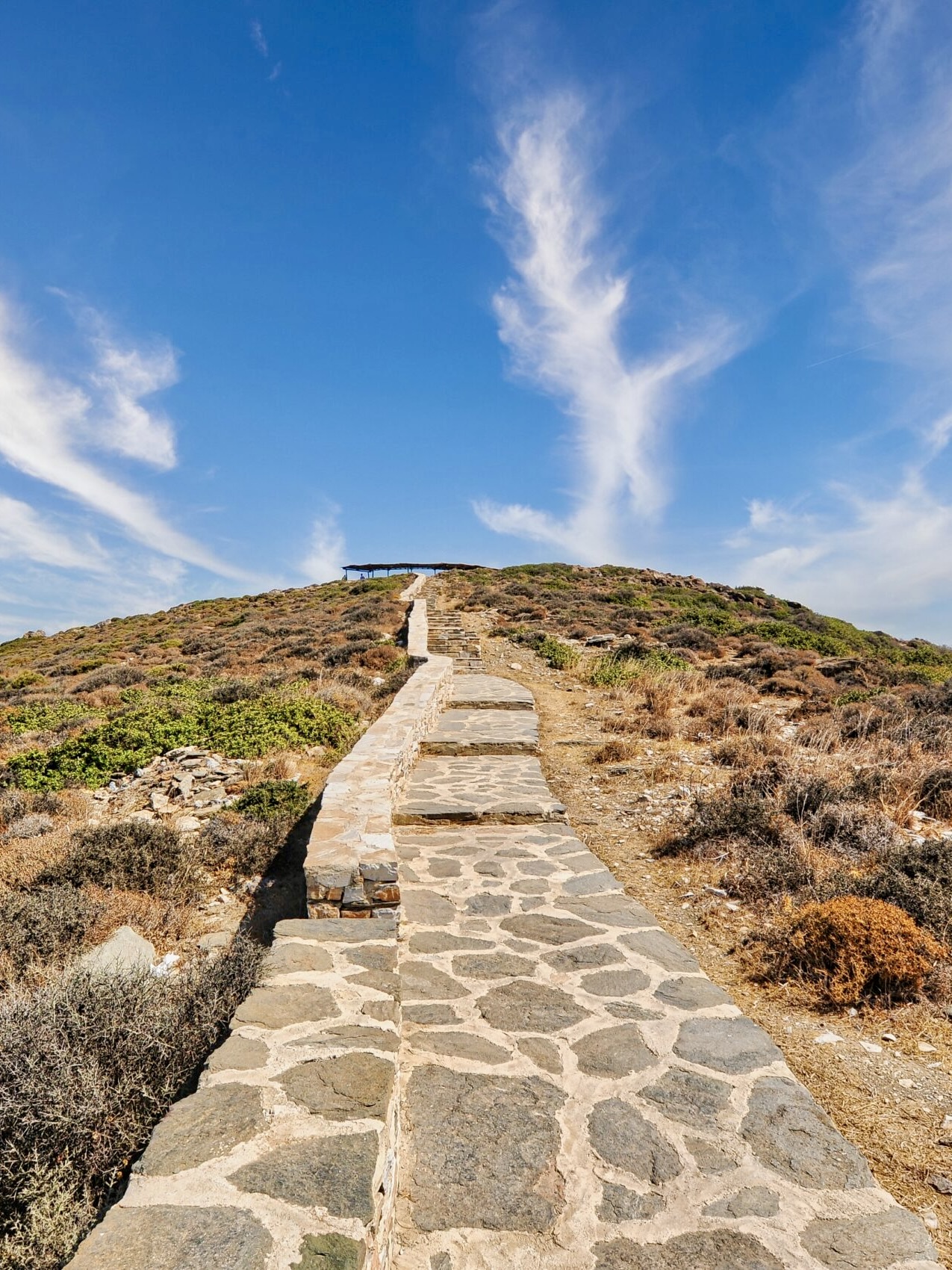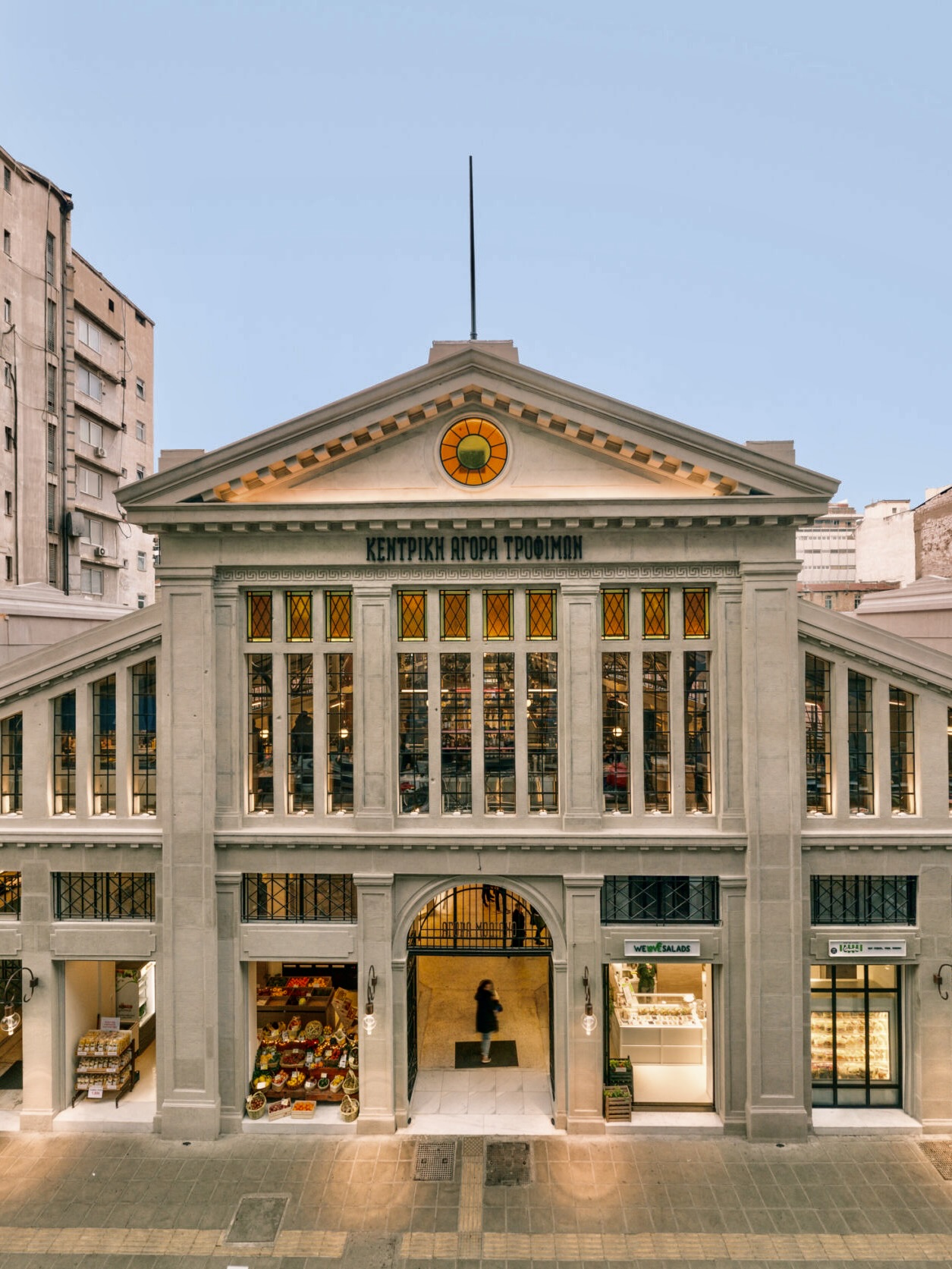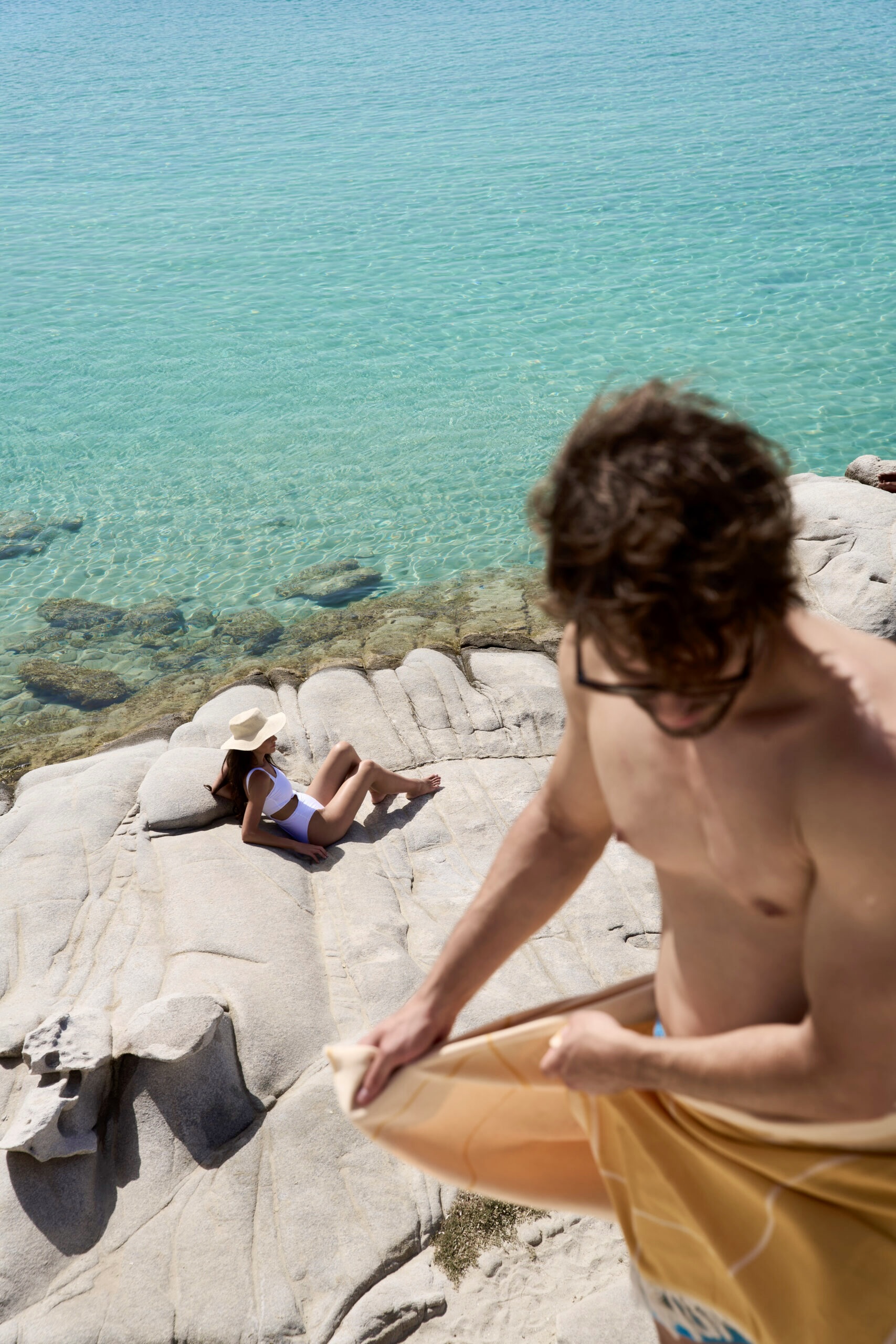For those yearning to explore beyond the sun-soaked beaches, Ios harbors a treasure trove of captivating experiences waiting to be unearthed. From the ancient whispers of the Skarkos archaeological site to the curated wonders of the Archaeological Museum, and the enigmatic allure of Homer’s purported final resting place, this Cycladic gem offers far more than its famed nightlife suggests.
Join us as we unveil the island’s most compelling historical and cultural landmarks, guiding you through an Ios that time forgot—a place where myth and history intertwine beneath the Mediterranean sun.
Panagia Gremiotissa
Standing at the highest point of Hora (main town) of Ios since 1797, Panagia Gremiotissa (gremos means cliff-edge) owes its name to the somewhat dramatic location where it was built. According to tradition, the icon of the Virgin Mary miraculously arrived all the way from Crete to Mylopotas on a raft during the Turkish occupation so that it could protect the island. Shepherds saw the light from its candle and took the icon to the Hora. Again miraculously, the icon indicated where the church should be built, which was to be positioned in such a way that it faces Crete. Just above Gremiotissa are the three small chapels of St. Nicholas, St. John, and St. Eleftherios.
The Windmills
At sunset, visitors flock to the “spring square” or the windmills square, and rightly so: the 12 remaining tower mills, some restored, provide a stunning backdrop for photos and videos. From this point, the view of the hill of Hora and the surrounding area is impressive. The windmills operated until 1960. Powered by the wind, the sails turned the large millstones, grinding wheat, barley, and corn to supply flour to the locals and neighboring areas.
The Tomb of Homer
The remnants of this Hellenistic tower lie on the northern side of the island, on the so-called hill of Psathopyrgos above the ruined settlement of Plakotos. It is believed that Homer’s tomb is located there. Ios was the homeland of his mother, Clymene, and according to ancient writers, when Homer died he was buried on the island. The traveler Pausanias recounts a prophecy from the Oracle of Delphi, which foretold that the poet would be buried on Ios. It is also said that he died from grief after failing to solve a riddle posed by the people of Ios. In the Classical and Hellenistic periods, Ios’s coins depicted Homer’s image on one side. Additionally, a fragment of a marble plaque related to Homer was discovered at the archaeological site of Plakotos in 1774. Regardless of the historical accuracy, the site offers panoramic views of the sea and surrounding coasts.
The Archaeological Site of Skarkos
The aerial views of the area are impressive. The intricate network of stone walls around the hill, where a multi-period prehistoric site and a mid-third millennium BC settlement were discovered. It resembles the spirals of a snail, which is “Karavola” in the local dialect, which is what they named it. The hill is strategically located on the western side of Ios, near one of the largest natural harbors in the Cyclades and the island’s most extensive cultivated lands.
Systematic excavations at Skarkos, covering approximately 11 acres, revealed part of a remarkably well-preserved settlement with an organized urban plan. This excavation filled a significant gap in archaeologists’ understanding of prehistoric Cycladic settlements, providing key insights into the social and economic conditions of the islands during the Early Bronze Age (Early Cycladic II period, Keros-Syros group, 2700-2400/2300 BC).
Excavations, which began in 1896 and continue to this day, have unearthed a neighborhood on the eastern side of the hill and building remains to the west, near the harbor. These buildings, primarily residences, typically have a ground floor and an upper floor, and include courtyards enclosed by high walls, some reaching three to four meters in height. Many interesting artifacts were discovered, such as metal, bone, and stone vessels and tools. Also, white marble figurines, and some rare items made from other materials. Pottery was also found, with some vessels arriving in Ios from other parts of the Aegean, providing specialists with information about the communication networks of that time. Numerous well-crafted stone vessels were also unearthed, proving that stone craftsmanship was practiced on the island. The technology of obsidian, sourced from the two quarries on Milos, was also well-developed.
In recent years, seals, made of both bone and stone, as well as numerous stamped objects, have been found, an extremely rare discovery for an Early Cycladic settlement. These movable findings indicate technical specialization. This suggests that the settlement included builders, potters, and stone carvers. You can reach Skarkos on foot in around 40 minutes, starting from the windmill square in Chora.
The Archaeological Museum of Chora
Housed since 1998 in the neoclassical Amiradakio building, the museum is designed with a modern approach. The first room focuses on the Early Cycladic period and the history of archaeological research on the island. The collection includes clay vessels, stone utensils and objects, figurines, and more. The second room is dedicated to the Middle and Late Bronze Age. The exhibits in both rooms come from the excavations at Skarkos. The third and fourth rooms cover the historical periods. Here, you can admire findings from the ancient city of Ios, present-day Chora, such as sculptures, inscriptions, and pottery up until the 7th century BC. (Phone: +30 22860 91246)
Paleokastro
On the eastern side of the island, between Agia Theodoti and Psathi, the hill with the ruins of Paleokastro is one of the most beautiful spots in Ios. From here you can gaze out over the sea and neighboring islands such as Naxos, Amorgos, and Paros. It is believed that the castle was built on the site of a pre-existing Byzantine structure by the Venetian Marco Crispi in 1397 to oversee the sea routes to the Aegean and Crete. A part of the walls and the church of Panagia Paleokastritissa are still preserved. The walk to the castle along the edge of the cliff is a truly fascinating experience.
Agia Theodoti
In the northeastern part of the island lies the oldest church in Ios, Agia Theodoti, very close to the bay of the same name. It was founded in the 16th century, built atop the ruins of an ancient temple of Apollo, and the area has been declared an archaeological site. Directly opposite Agia Theodoti, traces of an ancient aqueduct and a Hellenistic tower have been discovered.



